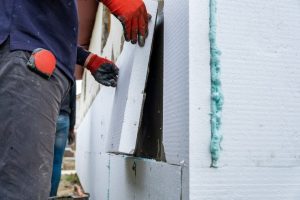Polyurea coating application The question of how to prepare the surface before application is a critical step for a durable and long-lasting coating. First and foremost, the surface must be clean, dry, and dust-free. During this process, appropriate polyurea types for high-traffic areas should be carefully selected. Proper surface preparation increases the adhesion of the polyurea coating and provides long-term protection. These steps also prevent the coating from cracking or premature wear. Understanding the differences between polyurea and liquid membranes helps guide product selection. The question of whether liquid membrane or polyurea should be used for roof waterproofing is important for assessing the suitability of the surface before application.
Surface Cleaning and Dust Removal
Before applying a polyurea coating, the surface must be thoroughly cleaned. Dust, dirt, or oil residue on the surface can prevent the coating from adhering. Therefore, cleaning is performed with pressurized water or appropriate cleaning materials. Any remaining old coating should be removed by sanding or grinding. It is crucial to control the surface's moisture content during cleaning.
Surface Drying and Moisture Control
Surface moisture directly affects the performance of a polyurea coating. Moisture prevents proper adhesion, but drying must be carried out with care. Drying is achieved through sunlight or appropriate heat sources. Furthermore, the surface is checked for smoothness and any necessary adjustments are made. At this stage, polyurea types recommended for high-traffic areas should be considered.
Primer Application and Increasing Adhesion Strength
The use of a primer ensures strong adhesion of the polyurea coating to the surface. Choosing the right primer helps understand the differences between polyurea and liquid membranes. The primer forms a thin layer on the surface and increases the durability of the coating. Coating or roller techniques are used during application. Polyurea application should not begin until the primer has completely dried.
Surface Roughening and Mechanical Preparation
Surface roughening enhances the mechanical bonding of the polyurea coating. This process, performed by sanding or grinding, prevents premature peeling of the coating. During roughening, the surface must be prepared to an even depth. This step is also important in answering the question of whether liquid membrane or polyurea should be used for roof waterproofing. Surface smoothness is a critical step for coating thickness and durability.
Final Checks and Tests Before Implementation
After surface preparation is complete, pre-application inspections are conducted. The surface's cleanliness, moisture level, and roughness are reviewed. At this stage, the appropriate polyurea type and primer layer are selected. Final inspections ensure the coating's longevity, but missing steps can reduce performance. Comparisons between polyurea and liquid membranes are helpful in making decisions during this process.


